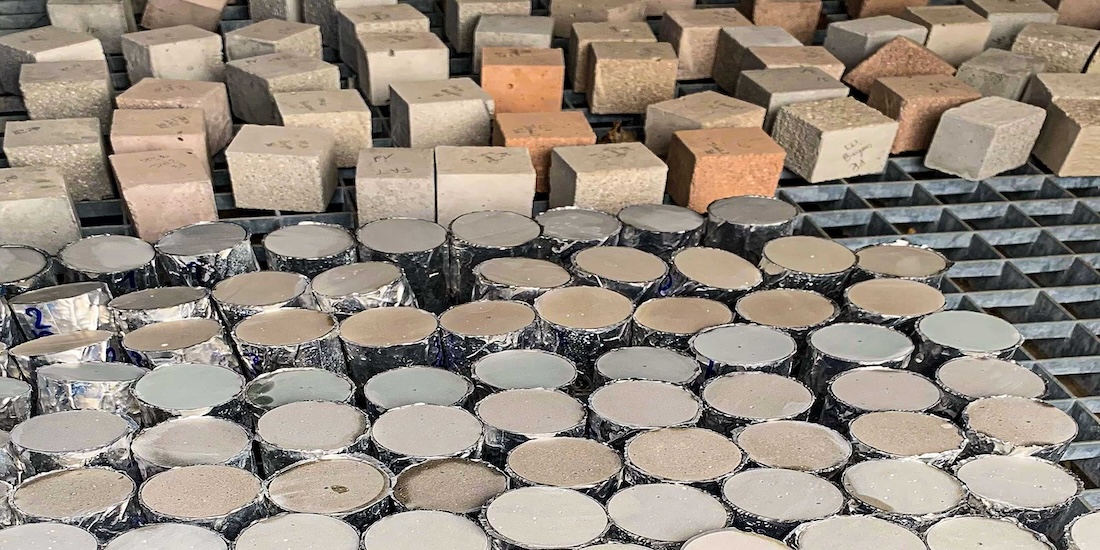Tokyo (SCCIJ) – An ultra-green, cost-effective concrete based on a new formula is conquering the world because it helps to cut climate emissions of this building material by up to two-thirds. Production of the cement is already taking place in seven plants globally.

The Swiss ultra-green contains less clinker and cement (© Franko Zunino/ETHZ).
Dual strategy
Concrete is the most widely used building material worldwide, providing the foundation of our modern society’s infrastructure. However, cement, the binding agent in concrete, generates around eight percent of global carbon dioxide (CO2) emissions.
The Ultra Green Concrete (UGC) project headed by materials scientist Franco Zunino at the Swiss Federal Institute of Technology in Zurich (ETH) aims to develop a concrete that emits less CO2 without compromising its important properties.
The scientist pursues a two-fold strategy for the new green concrete: first, reducing the amount of clinker per unit of cement. A project at the Swiss Federal Institute of Technology in Lausanne (EPFL) in which Zunino is actively involved has already set a new standard. It uses 50 percent clinker and a combination of calcined clay and limestone in cement that cuts CO2 emissions by around 40 percent. Second, the Swiss concrete uses less cement.
High CO2 reductions
This dual strategy offers flexibility in tailoring low-carbon concrete compositions to individual markets. Calculations by Zunino and his team have shown that the CO2 emissions of Ultra Green Concrete can be reduced from 300 kg per cubic meter to about 80–100 kg per cubic meter. Depending on the application, up to two-thirds of CO2 emissions could be consequently saved without compromising material performance.
“The ideal would be to implement both steps at the same time, but the individual components are independent of each other. In some markets, it may be difficult to implement both aspects of the dual strategy, as production capacity and infrastructure need to be put in place,” Franco Zunino explains.
Global production
The ultra-green concrete has proven to be highly successful due to being cost-effective, safe, and user-friendly. According to Zunino, it is even cheaper than conventional concrete. The proportion of expensive components is lower, while the quality and thus price of the concrete remain the same. This creates financial incentives for using the new formula.
Zunino stresses that low-carbon cement is also more durable than conventional one. There are currently about seven large-scale cement plants worldwide producing cement using the Swiss approach to lower the clinker content of the cement. He expects the number to exceed 40 in the coming years.
“Demand for concrete will increase in the future. We can offer assistance by developing improved concrete mixtures with a lower cement content and thus still achieve our environmental goals,” Zunino adds. He is convinced that this type of cement will be the most widely used worldwide ten years from now.
Text: © Mira Weckler/ETHZ News (Editing by SCCIJ)





























